
MOVIE SHELF: COMPARING FILMS TO THEIR LITERARY COUNTERPARTS
christopher funderburg
CLAUDE CHABROL'S THE BRIDESMAID
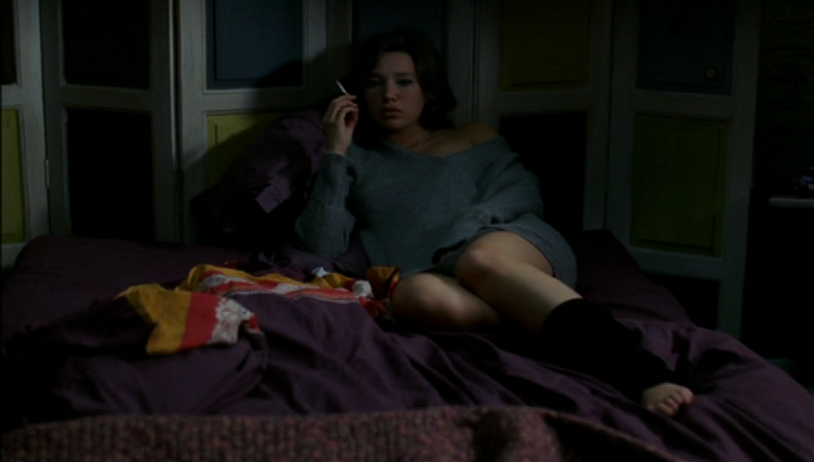
based on THE BRIDESMAID by RUTH RENDELL
page 2
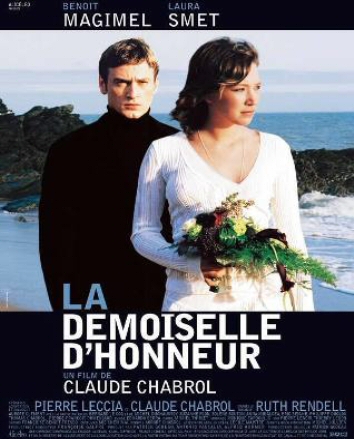
Beyond the physical description of Senta, Chabrol also extinguishes the defining characteristic of Rendell's young woman: "she only lies about the little things." Again, I'm not sure what constitute the "little things" in Rendell's mind, but Chabrol portrays her a straight-up fantasist, beginning with the Senta/Stephanie name game. When Phillips asks her point-blank if Senta is her real name, she says it is. After a scene of her ignoring the ringing of her phone, she tells Phillip she had her phone turned off all day and that's why she didn't answer his call. Our impression of her is that she's a bald-faced liar, little things or not. The book hinges on her being basically truthful and Phillip's doubts about her stories being unfounded, most importantly the murder he's convinced she didn't actually commit. With the film, her confabulations are explicitly tied to their sexual relationship as once just before she kisses him, she demands to hear her name in his mouth. He says responds with "Senta" even though he knows that's not really her name. Their relationship is a shared fantasy, a passageway into their erotic, id-driven imaginations which then intertwine and produce a bizarre reality. Chabrol isn't interested in Rendell's character, even her story really, so he rewrites it in his own persistent thematic image: the seemingly normal man who reveals his insanity in the mirror of his readily depraved partner. Her nature as a fantasist serves this change in characterization. Her enticements for him to join her in a psycho-sexual fantasy space are also a more satisfying dynamic than the one which has you spending 293 pages repeating to yourself, this young man can't possibly this oblivious, can he?
Truthfully, and let's focus on Rendell here for a bit, I'm not really sure what Rendell is after. It's certainly not to tell a ripping yarn. Like A Sight for Sore Eyes, the book is bloated beyond sense, not just by the tedious listing of flower blooms and button styles, but by pointless diversions from the plot. If you want to read some descriptions of a young man stopping off by his house to walk his dog, The Bridesmaid is the book for you.* There's a lengthy section, damn near forty pages, where after a quarrel Phillip leaves Senta a bunch of messages and tries unsuccessfully to get in touch with her. The plot doesn't advance, just ol' Phillip Wardman driving to the house on Taursus lane, banging on the door, driving home to walk the dog and leaving another message. Forty pages. He misses her, you see? Their tiff and separation take up a mere few minutes of Chabrol's film. And these are not a riveting forty pages. Again, I see what Rendell is thinking, I get her: she's trying to show us how crazed good ol' violence-abhorring Phillip Wardman is when he can't see his whiter-than-milk cosmic mistress, how he can therefore be induced to entertain the notion of sharing murders. But it does not make for a roaring story. It's punishing, "he answered the phone excitedly...but it was someone else calling"-type tedium.
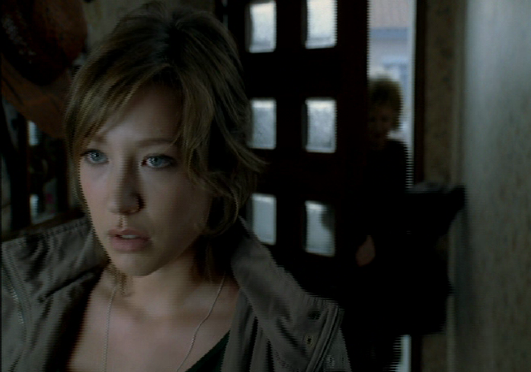
Senta as Rendell presents her is more or less a hippie with her love of astrology and reincarnation. She's a bit of caricature of bohemianism, an actress who lives in a basement and only drinks wine. Her lazy lifestyle is supported by an absent tango expert stepmother. She's boring and not precisely believable in that funny way that cliched characters have a tendency to be not precisely believable despite being sketches of type commonplace in the real world - sure, I've known more than a few girls (it's tough to call them women) who have acted like the Senta in the book, but something about Rendell's realization of such a character feels secondhand and therefore unconvincing. Senta's written as a type and furthermore I think a type for which Rendell feels a strong distaste but does not have much up-close familiarity. Senta is a sort that Rendell has heard about and seen a bit and thinks she has a bead on, but only has clichés to offer. That leads into the unsolvable problem of the book: I can't figure with whom she as an author ultimately identifies or even expects her readers to identify with. In both novels I have read, Rendell displays a real loathing for English blokes, slobs who drink a pint and watch sports - pudgy, slovenly working class louts who have dirty homes and don't have gardens with nice flowers in them. In The Bridesmaid, Rendell takes time out of her story to portray the new brother-in-law as that very kind of an unpleasant bloke but to little effect apart from expressing the notion "aren't these working class people who watch tv fat and disgusting?!" Her descriptions of their filth and dirtiness in general reach an almost hysterical pitch. I imagine Rendell washes her hands ten times a day and has a cleaning service come to her home daily, her neat freakiness is when her writing is most animated and evocative. The biggest give-away to Senta's dangerousness is that she lives in a dingy basement and doesn't care about physical cleanliness, a trait she shares with the negligent parents of A Sight for Sore Eyes and the detestable brother-in-law Darren. To Rendell, squalor equals mental squalor and dirty people are invariably bad people - even little sister's descent into a life of fruit machinin' is confirmed by her unwillingness to shower. Of course she conceives the murder of a filthy, smelly old vagrant as the ultimate proof of love - what better way to show you love someone than to remove one of the world's smelliest persons? You can feel Rendell's distaste for so many of the people in her books in regards to her obsession with cleanliness, but it's not clear why she wants to convey that disgust to us or really who is supposed to be "clean."
Squalor equal mental squalor is, of course, a very on-the-nose metaphor, the kind of thing like naming a character who has her sham Ms. Haversham or the lordly architect of a high rise Mr. Royal. It doesn't mean that the artwork employing such nonsense is necessarily valueless, just that it is willing to punch you in the face with its ideas. Rendell definitely hits her metaphors on the nose, her use of the Flora sculpture being maybe the most direct and its fuzzy endgame indicative of Rendell's ineffectualness with the "why?" or even "who cares?" of her story. First, the bust reminds Phillip of his mother and, uh-oh, here comes an Oedipal complex! For about two seconds. Nevermind. Then, Senta steals his heart and now, hey, the sculpture reminds him of her, her albino lips and blood-red pubes...but watch out, he thinks Senta might be crazy - this statue doesn't look like her at all! Rendell's uptight relationship to filth seems to extend to the human sexual act (also known as fuckin') as well. Both A Sight for Sore Eyes and The Bridesmaid feature improbably sexless young men in their late teens/early 20's. This is not an age at which men are normally more or less disinterested in physical desire, let alone aware they're attractive to women, but indifferent to consummating that attraction - a quality both Phillip and Eye's antagonist share. It seems like Rendell wants to signal "don't worry, Phillip is ok, he doesn't think about how much women want to have sex with him even though he's twenty years old and looks like (swoon!) a young Paul McCartney." Continuing this thought from the opposite avenue, both Senta and Sight's antagonist anti-hero fall in love instantly and want to consummate their physical relationship as soon as possible, which is bad and dirty, like unwashed purple sheets or a smelly corpse. But that's what I just can't figure - she hits the reader so hard with her feelings, but the "why" still remains obscure. If Senta is repulsive and dangerous and mommy is a dingbat and Darren is a lout and little sis doesn't bathe which means she has clearly lost her shit, why does Rendell think we will care about this story? Does she just want us to peer in horror at gross people and their repulsive behaviors like sex and murder?
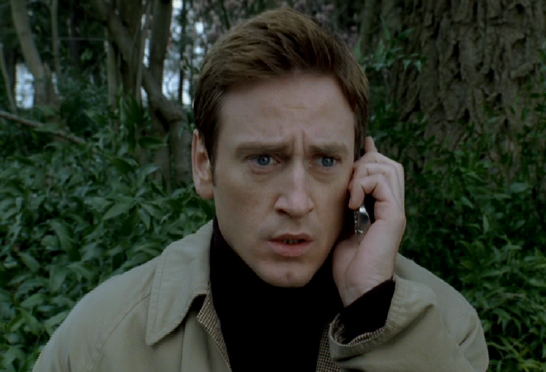
One of Phillip's most strangely triumphant moments in the novel comes when he dodges the seduction of a thirty-something actress who wants him to lay some pipe in more than just her toilet. She also wants him to lay pipe in her shitbox. He blows her off and Rendell plays the scene like "what a decent fellow - he's got a girlfriend, you know" even though at that point in the story there is no doubt that Senta is out of her gourd and he should be pursuing other options. Rendell wants her readers to be proud of just how much he can repress his sexual desire, even in a context when maybe hooking up with a beautiful famous lady could be pretty cool. When the actress exacts revenge by making up a story of inappropriate behavior that she tells to his bosses, it's just another instance where Rendell writes about sexual desire as something inherently dangerous and to be utterly avoided. Chabrol drops that actress subplot altogether and introduces an entirely different view of sexuality, especially as far as Phillip is concerned. In the book, Phillip freaks out about Gerard Arnheim dropping his mother after he finds out the couple had sex one time. Before then, he doesn't really care. The book also winds around a late-story revelation concerning Senta misinterpreting Phillip's reluctance to see her. He's realizing she's nuts, but she thinks he's jealous over a single date she took with another man years earlier, another amazingly conservative notion casually dropped into the story. Chabrol has Senta as a woman who says plainly "I've tried everything" when it comes to sex after Phillip casually asks her if she's been with any woman - her backstory includes a stint as a stripper in NYC and she exudes a sexual openness. Phillip doesn't react negatively to any of it, he only gets a little freaked out when she gives him a blow job while he's on the phone for work and even then, in the aftermath, he seems excited by her aggressive sexuality. Contrary to the book, the film gives you no impression that Senta's problem is that she's sexualized. Phillip and Senta's sexual connection in the film barely factors into the plot, it's just a signal of their intimacy and wholeness as a couple. In the book, Phillip's relationship to Senta is defined (or at least constantly measured by Rendell) by his physical desire for her. He either wants to have sex with her continuously or never see her again, those are the only two types of feelings her has for her and his lust/lack-of frequently drives the plot.
Just staying on the idea of Rendell's general traditionalism, another tedious aspect of her book is that Senta and Phillip's relationship plays out like a regular courtship. we're talking about scenes where they have a polite tea with his sister and new brother-in-law, then another scene where they have a polite tea with his mother, then other scenes where our heroes discuss things like marriage proposals and engagements before which we are treated to a description of Phillip's uncertainty as to whether he should get down on one knee to propose or not. They even spend a good bit of time working on her supposed agoraphobia by going to casual dinners at small cafes or having picnics. Geez - look at the book I'm describing to you: walking the dog, leaving phone messages, polite introductory tea sessions, park picnics and I haven't even gotten to the surprisingly comprehensive subplot about Ms. Ripple and the unacceptable vein in her marble bathroom countertop. Chabrol keeps Phillip and Senta more or less between the sheets, where they should be - either that or he's sending Phillip out to investigate truth and fiction when it comes to murder. Makes sense, right? Chabrol's concern is Phillip's fantasy life. Rendell's Phillip has no fantasy life and she gives us no one in the book to care about, not the dingbat mom or the addled kelpto sister nor the loutish brother-in-law and dowdy sister, let alone over-sexed murderer Senta and dim-witted Phillip who for some reason doesn't see the writing on the wall. Honestly, when Rendell has Senta mention "Martin Hunt," does she not expect her readers to remember the name and see where her stumbling story is bumbling? There's only six male characters mentioned by name in the book! Martin Hunt is the boyfriend, several times discussed, of the missing Rebecca Neave. Gosh, I wonder what Senta has to do with a young woman missing, presumed dead. Who knows? I'm sure Rendell will get back to us on that in another 35 pages.
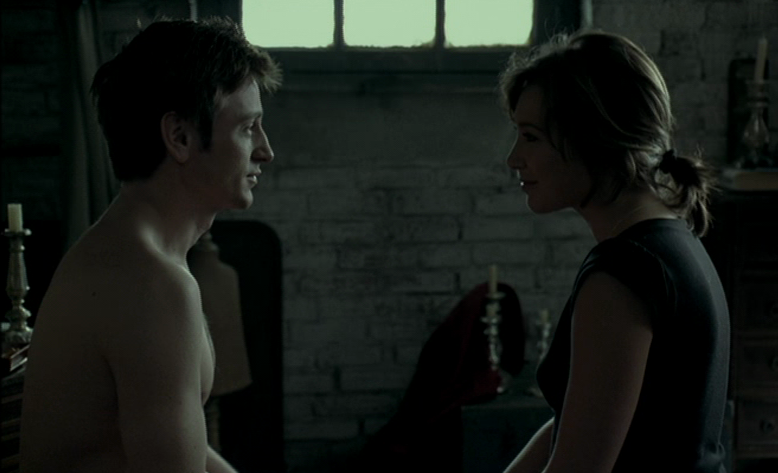
Chabrol wonderfully doesn't even pretend like the big corpse reveal at the end of his film even matters. He's in too much of hurry to get the lovers back into bed and confirm their strange bond, the bond of lunatics in love. Because Chabrol has so little use for Rendell's tedious plot, his script displays an incredible economy from which Rendell could stand to learn. It takes her of all of five minutes to establish the details of Raphaelle Plissier's disappearance, the mother's potential marriage to Gerard Courtois, the older sister's marriage, the mother's fiscally unsound hair-dressing job and then send them off to the dinner to meet Gerard. This is stuff that Rendell is still parcelling out and working through a hundred pages into the novel. The economy of design really punishes the novel, there's no way to read what Rendell has written without annoyance after seeing how Chabrol and co-writer Leccia have re-arranged it. The book just feels like so much pointless wheel-spinning. The script rights it.
Maybe more embarrassing for Rendell, Chabrol re-imagines what should be the novel's bread-and-butter, the mechanics of the grotesque criminal plot. Rendell's story relies on a series of convoluted and silly coincidences. Phillip sees Flora and steals her back; a neighbor sees him take the statue and gets his license plate number. He points out to Senta the house from which he stole Flora and says "Gerard Arnheim lives there." Senta kills the man who lives in the house, thinking he's Gerard Arnheim. But wait - Flora was accidentally put up for auction (?!) and it wasn't Arnheim Senta killed (it was Harold Meyerson - again, almost no men are mentioned by name in the book, so it's easy to recall them all.) Next, a police-woman comes to arrest Phillip's sister and recognizes Flora by its green stain and chipped ear when she sees it at Phillip's house. The police connect Phillip to the murdered man by way of the stolen sculpture, Phillip and his car are identified by the nosy neighbor. The police then assume he has a girlfriend who matches the description of Senta, who was seen by several folks in the area after the murder. Arrest time! I mean, what is this horseshit? Accidental auctions and police-women on the lookout for chipped statues? In the film, everything about the confusion plays smoother and simpler: Phillip sees Flora while out on business and steals her. Senta hunts down Gerard Courtois' personal info and finds his house. After she claims to have killed him, Phillip goes to the house from which he stole the statue to check on Courtois. They chat in the street - see Courtois isn't dead! But Courtois had been out of town and (unbeknownst to him at the time of his conversation with Phillip) Senta killed his house-sitting cousin. When the police ask Courtois if he saw anyone strange around his house, he says "yeah, this guy whose mom I jilted!" You tell me which version is more concise and elegant.
Every change to the plot mechanics works better in the film - Senta even mentions right away that she hates the bum out front of her building, making Phillip's unintentional claim on his murder clearer and more effective. In the book, Senta doesn't mention her distaste for the bum except as a way of explaining why she assumed Phillip had targeted him. By delivering this information to the reader after the (ultimately erroneous) revelation that Phillip (supposedly) killed his beloved good luck bum (don't ask), Rendell dulls the impact of the revelation. Or consider how in the film, Phillip asks his customer about her new neighbor, but the woman doesn't know his name - a simpler way of creating confusion about who lives in the house and one that comes fairly early in the film. We're already not sure if Courtois lives there. In the book, narrative info almost invariably comes too late or after some unnecessarily convoluted explanation, like the aforementioned accidental auction that brought Flora to a new home. To be generous to Rendell, on some level, I think she really enjoys silly narrative coincidences: A Sore for Sore Eyes seems intentionally built around the morbid joke of the anti-hero's ridiculous demise. Even the unlikely, absurd car crash that punctuates La Cérémonie (and I'm assuming the novel shares with Chabrol's film) has a humorousness to its outlandish improbability that I suspect Rendell intends. The Bridesmaid is written around a series of goofball coincidences that seem silly (but not altogether impossible) in their details, but the black humor simply isn't as plausible as it is in Sight or the film of Judgement in Stone.
Beyond the intent, I would say things have gotten so convoluted by the end of her book, it's not even clear to me why the police would be after Phillip. He hasn't committed any crimes and truly didn't believe Senta had either. When the police surround them in the basement, he's freaking out about Rebecca Neave's corpse and clearly shocked by his unlikely circumstance. Is there any chance he doesn't just turn State's Evidence and 100% sell Senta out? They might be able to prove he knew about the murder of Harold Meyerson, but there's no evidence he helped with the commission of it (because he didn't), and so what if Rebecca Neave is in Senta's cupboard? That's not his problem. I suspect he wouldn't even be looking at jail time, all things considered. That's why Chabrol's changes to the essential psychological character of Phillip work so well: at the end of the film, as the police storm the building, he wants to spend eternity between the sheets in Senta's basement - he's psychologically complicit in her crimes, their psychotic spiritual connection ties him to her violence. Chabrol's Phillip Tardeau sees himself as culpable, as part of Senta's murders, in a way that good ol' Phillip Wardman only fears he'll be connected to crimes for which he actually bears no responsibility. The plot mechanics of Rendell's story result in a rickety contraption that chugs forward awkwardly and then collapses in a heap. No wonder Chabrol seems determined to change nearly everything about it.
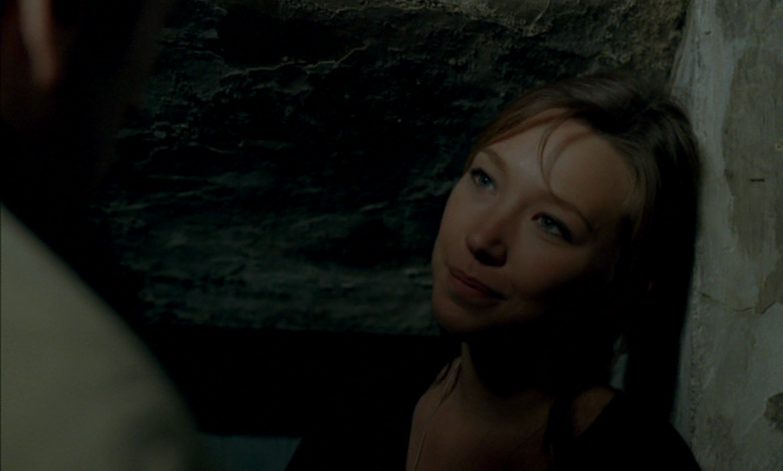
* Don't worry, I wasn't paid to write that blurb, although it will be appearing on the back cover of the next edition.
<<Previous Page 1 2 3 Next Page>>
home about contact us featured writings years in review film productions
All rights reserved The Pink Smoke © 2013